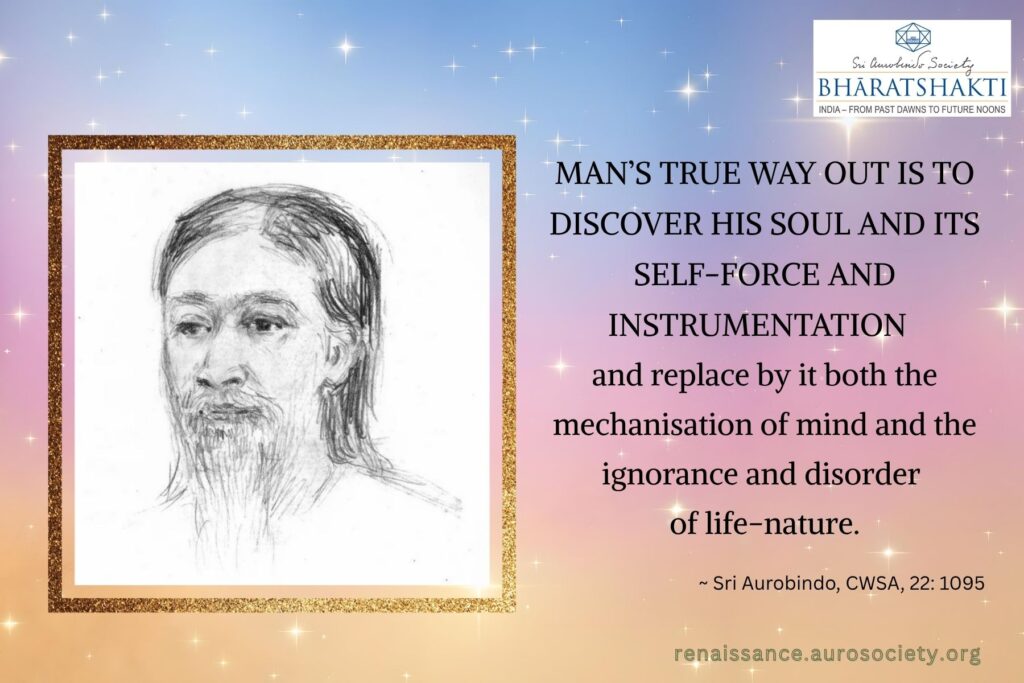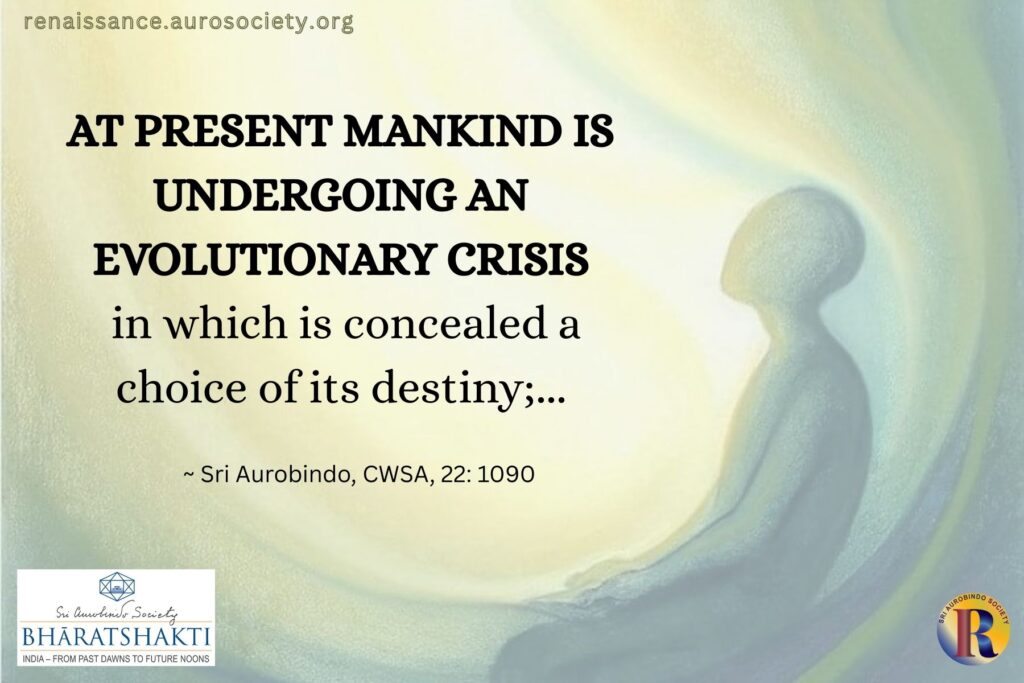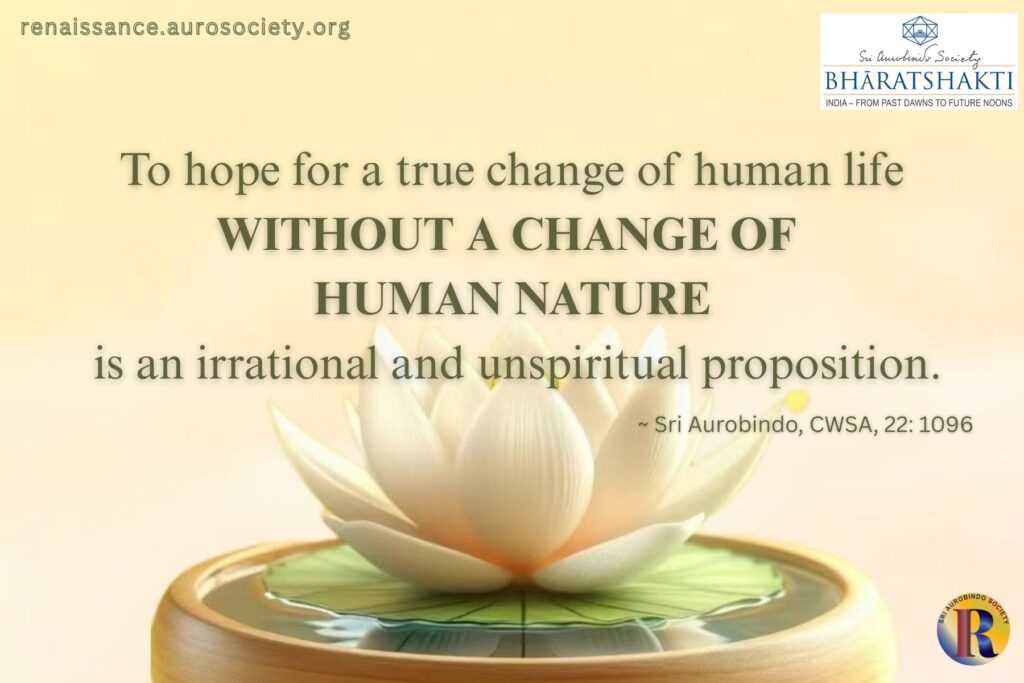Volume V, Issue 2
Author: Mangesh V. Nadkarni
CONTINUED FROM PART 3

The story of Savitri is not something that once happened and is finished. The story of Savitri is enacted in every age. It is being enacted in this age, it was enacted in the ages past. It is enacted every time when the human soul is arrested in its progress and doesn’t know how to rise beyond where it finds itself.
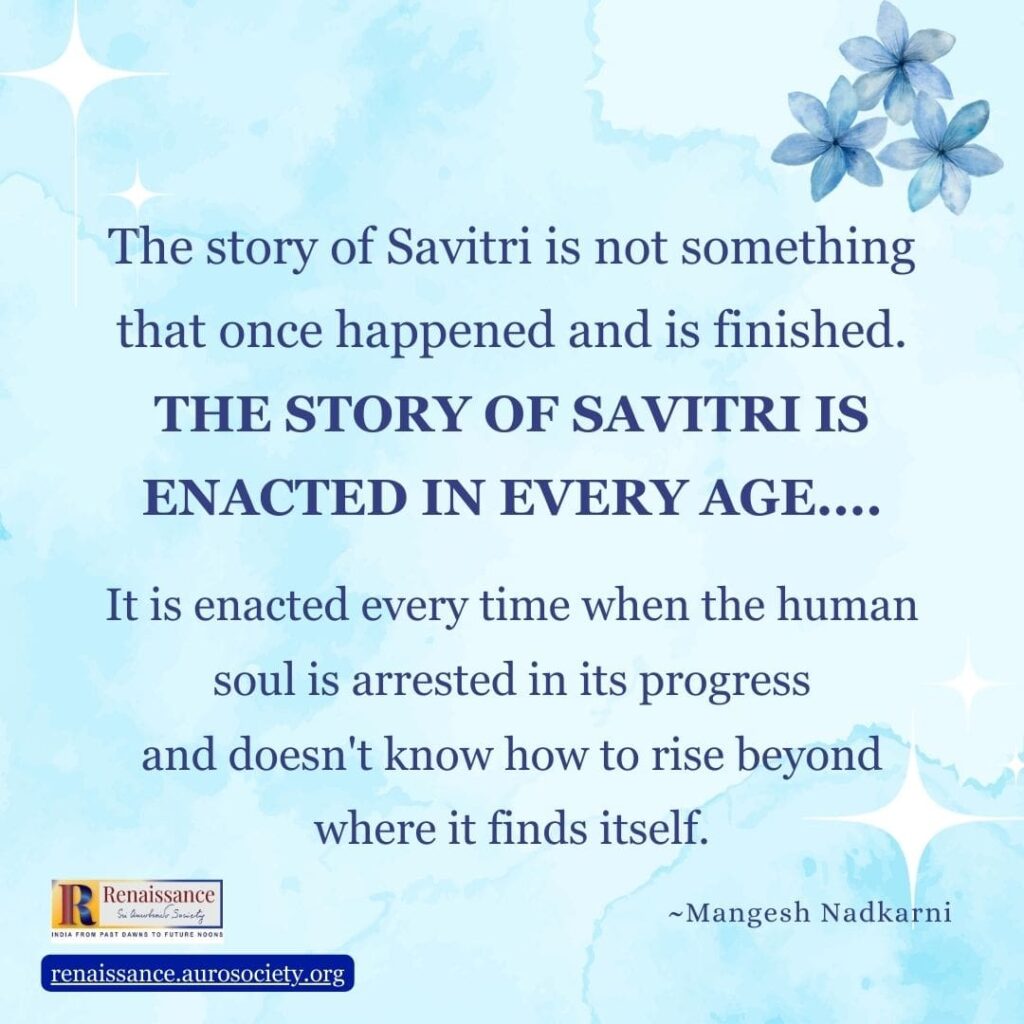
Savitri is born as the divine Grace to help Satyavan go beyond this impediment. Therefore, Sri Aurobindo says,
Still this is not a mere allegory, the characters are not personified qualities, but incarnations or emanations of living and conscious Forces with whom we can enter into concrete touch and they take human bodies in order to help man and show him the way from his mortal state to a divine consciousness and immortal life.
Now, as I said, Satyavan is this aspiring human spirit caught here in the mesh of ignorance and death, while Savitri is the Divine’s Grace, the Divine’s love which has come down. If you want beautiful words, Sri Aurobindo explains it very clearly. The context is not important for our present purposes. Here, he refers to Satyavan:
He is my soul that climbs from nescient Night
~ CWSA, Vol. 34, pp. 702-703
Through life and mind and supernature’s Vast
To the supernal light of Timelessness
And my eternity hid in moving Time
And my boundlessness cut by the curve of Space.
It climbs to the greatness it has left behind
And to the beauty and joy from which it fell,
To the closeness and sweetness of all things divine,
To light without bounds and life illimitable,
Taste of the depths of the Ineffable’s bliss,
Touch of the immortal and the infinite.
He is my soul that gropes out of the beast
To reach humanity’s heights of lucent thought
And the vicinity of Truth’s sublime.
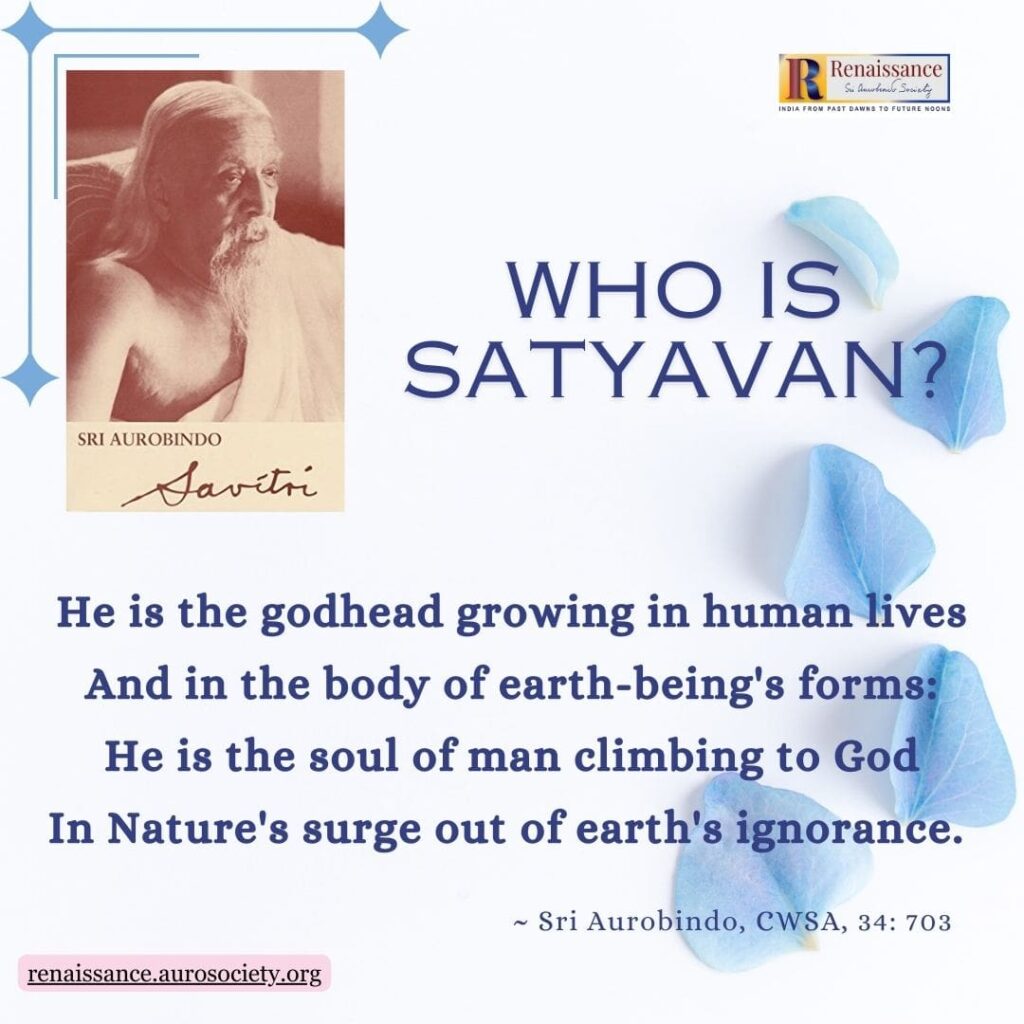
Who is Satyavan?
He is the godhead growing in human lives
~ CWSA, Vol. 34, p. 703
And in the body of earth-being’s forms:
He is the soul of man climbing to God
In Nature’s surge out of earth’s ignorance.
If this is Satyavan, then who is Savitri? Satyavan is the consciousness, Savitri is the power. Sri Aurobindo himself explains:
O Savitri, thou art my spirit’s Power,
~ CWSA, Vol. 34, p. 703
The revealing voice of my immortal Word,
The face of Truth upon the roads of Time
Pointing to the souls of men the routes to God.
Savitri is the one who points the souls of men to the routes to God. She is the one who helps, she is the one who directs, and that’s why she is the Mother.
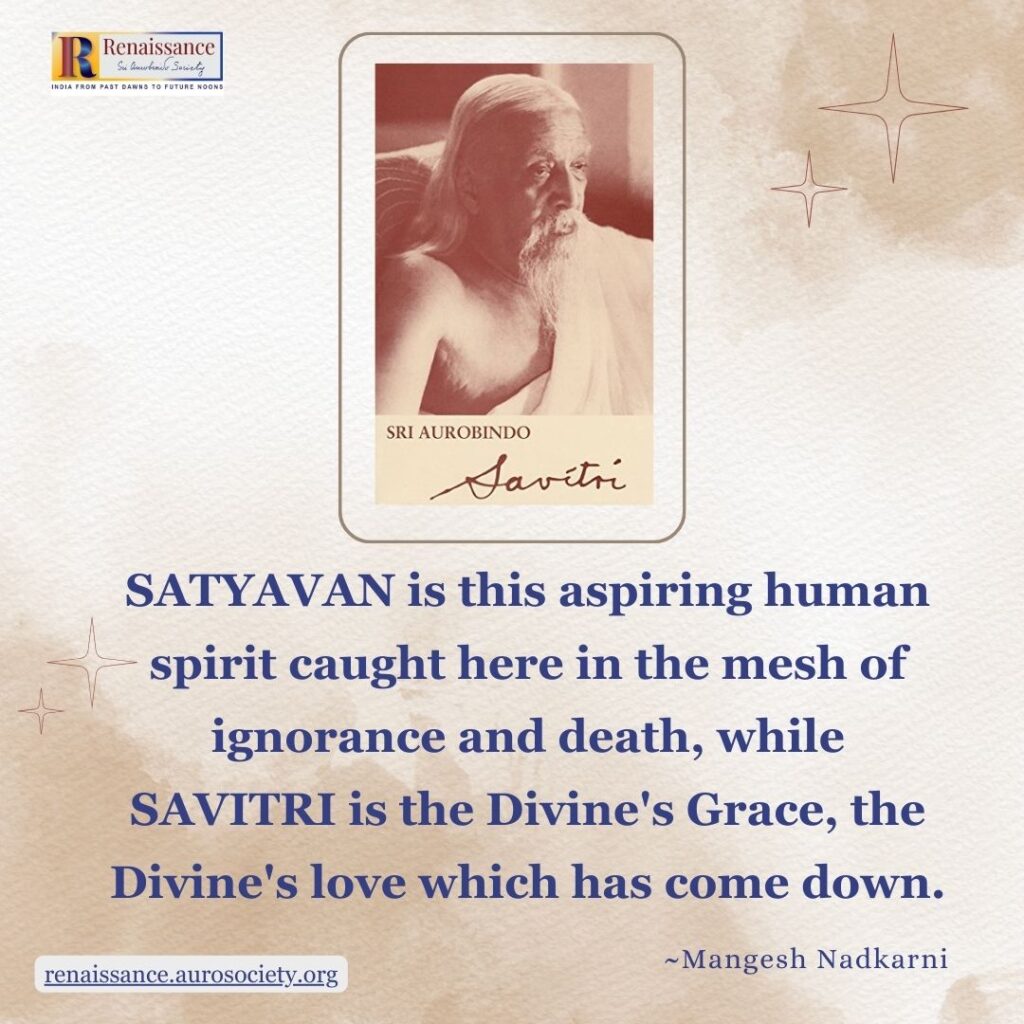
While the dim light from the veiled Spirit’s peak
~ CWSA, Vol. 34, p. 703
Falls upon Matter’s stark inconscient sleep
As if a pale moonbeam on a dense glade,
And Mind in a half-light moves amid half-truths
And the human heart knows only human love
And life is a stumbling and imperfect force
And the body counts out its precarious days,
You shall be born into man’s dubious hours
In forms that hide the soul’s divinity
And show through veils of the earth’s doubting air
My glory breaking through clouds a sun,
Or burning like a rare and inward fire,
And with my nameless influence fill men’s lives.
This is Savitri: this supreme Grace, this Ishwari has descended from the transcendental heights because the Ishwara is caught in the meshes of ignorance. This is the Radha who comes down to rescue the Krishna who mischievously is lost here amidst the lila of ignorance. This then is the central symbolism.
This is Satyavan, struggling helplessly, very often giving up of ever rising beyond where he is, and then comes the divine Grace in whatever form, directing him, helping him: this is what happens in life to all of us. This is an important part of the symbolism of Savitri.
* * *
Earlier I talked about Aswapati’s yoga. And I said that Aswapati is basically representative of modern man who is blessed with all that the East and the West have to offer, and yet looking around he finds human life is miserable. The burden of suffering of mankind still remains undiminished: exploitation, cruelty, disharmony can be found in various forms.
Why is all this happening? In the canto titled ‘The Gospel of Death and Vanity of the Ideal‘ you have beautiful lines which express this bewilderment, this puzzlement:
The Avatars have lived and died in vain,
~ CWSA, Vol. 34, p. 609-610
Vain was the sage’s thought, the prophet’s voice;
In vain is seen the shining upward Way.
Earth lies unchanged beneath the circling sun;
The tragic thing about this earth, about the human condition, is that man seems to love his fall:
She loves her fall and no omnipotence
~ CWSA, Vol. 34, p. 610
Her mortal imperfections can erase,
Force on man’s crooked ignorance Heaven’s straight line
Or colonise a world of death with gods.
This is Aswapati’s puzzlement. Almost all the forces of intellect have been tried—education, science, religion, philanthropy, morality, spirituality.
Spirituality gets hold of the soul within but everything else is lost. The earth is lost, the very purpose for which God built this beautiful world and the evolutionary nature invested such tremendous creativity to create a man out of a handful of dust.
What are we? We are a handful of dust, but our destiny is to represent here, manifest here in this creation as God’s perfection. If you want this perfection here, you need to bring a transcendental Power. That is what Aswapati finds out. We are not talking about electric power or nuclear power—these are powers of a secondary nature—the primary powers are the powers of consciousness in man.
Is it the purpose of spirituality to bring this creation nearer to perfection? For that what do you need?
If the human mind had the capacity, by now we would have made a happy world. But we have not been able to make a happy world; we make a mess of everything. Why? This mess-making tendency is a characteristic feature of the human mind. Something beyond the human mind has to come and that is something that is not yet available.
The transcendental supreme Mother has to come down for it, she has to be born and make it possible for man to realise here, to manifest here, the supramental consciousness, which alone has the capacity to annihilate all the negations, all the limitations which come with the tremendous capacities that the mind has.
The mind has built up a wonderful civilisation, no doubt about it, and mind is a wonderful thing, but it’s not a complete thing. It has to be energised, it has to be made perfect. Aswapati finds there is no power here now that can bring man to perfection.
All revolutions failed, all revolutions will fail, because these revolutions do not do anything basically to human consciousness, the constitution of human consciousness. That is left exactly as it is. We change the outer surroundings, but the man remains untouched. This will not do.

Therefore, the new man who is going to come will be very much like us—he will not have two heads and four hands—but he will have a new power of consciousness which will make discord impossible. There won’t be discord or disharmony. It is this new power that has to come and that is one of the meanings of Aswapati’s symbol.

